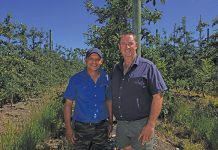
Photo: FW Archive
Maize is produced across South Africa by both small- and large-scale operations to support household consumption and the livestock sector. The most important field crop produced in the country, it is a staple food and the main source of nutrition for most of the population. It provides an effective supply of carbohydrates, iron, zinc, vitamin B12 and essential fatty acids.
When processed, white maize feeds millions of South Africans in the form of porridge. When made into other products such as maize flour, it provides the basis for many baked goods, an array of snacks, and much else. Yellow maize, in turn, is used as feed by livestock farmers.
National consumption of the grain has grown by 27% over the past 10 years (see Graph 1).
Rising fertiliser and fuel prices
Despite all the above, maize production and consumption are both in for a bumpy ride, however. This is due to the rapid rise in production costs as a result of a decline in profit margins over the past 35 years.
The main reason for the latest increase in costs is the rise in fertiliser and fuel prices. Between January 2020 and March 2022, the prices of LAN (28), Urea (46), MAP and potassium chloride in South Africa increased by 262%, 152%, 138% and 177% respectively (see Graph 2).
Exacerbating the situation is the fact that per-hectare consumption of fertiliser has risen by about 35% since 2010 (see Graph 3).
These upward trends are likely to continue because of the degraded state of our soils and the long-term detrimental effect that these fertilisers have on them, which necessitates an increase in the use of synthetic fertilisers.
The challenges brought about by these structural changes in the pricing system have been intensified by rapidly rising fuel and electricity prices, and the difficult task of supplying these resources in a sustainable manner.
Consumers under pressure
The consequences of the above-mentioned price hikes have already begun to manifest themselves in the SAFEX price of maize and other commodities. In January 2020, the local price of white maize was R3 163/t, while that of yellow maize stood at R 2 932/t (see Graph 4). By July 2022, these prices had increased by 49% for white maize and 62% for yellow maize to R4 710/t and R4 750/t respectively.
All South Africans will be greatly affected by these elevated prices, as they have an impact on the entire food value chain. These increases are not taking place in isolation, but in conjunction with the rising costs of other goods in the basic food basket of the average South African household, interest rate hikes, surging utility prices, and the looming possibility of a recession and the further job losses that will result from it.
Many consumers will soon find themselves struggling to afford maize meal and other staple foods derived from the crop. Simultaneously, farmers of livestock, be it poultry, dairy cows or any other type, will also have to face the ramifications of these increases, as feed prices are set to continue growing extremely fast.
In contrast, household incomes increase by an average of about 5% per annum, while the grants for the elderly, poor and unemployed will become even less effective in meeting their monthly needs.
We must consider the possibility that issues of affordability and availability could trigger a decline in the procurement of basic food resources. This is likely to lead to an increase in hunger and malnutrition, and a food security crisis.
Regenerative farming
Serious as the situation is, it need not be doom and gloom. There is an efficient, sustainable and cost-effective solution to mitigate the situation in South Africa and provide better opportunities for both producers and consumers.
The answer lies in the adoption of farming systems that are resilient to external shocks such as the rising prices of synthetic fertilisers. The truth is that current conventional farming systems fall prey to these price hikes, leaving farmers and consumers vulnerable.
Conservation and regenerative agriculture reduce the need for external inputs. Through
the restoration of the underlying natural ecosystems on every farm, up to 50% of
costs can be saved. This will lead to the provision of free services, such as soil fertility, water availability, pest and disease control, and pollination. Farming closer to nature helps farmers to improve their productivity and drastically reduce their costs.
Such cost reductions have vast implications for producers and consumers alike. When producers implement regenerative farming measures, consumers reap the benefits through the reduced selling prices of crops. In this way, the risks of greater levels of hunger, malnutrition, poverty, and even a possible food security crisis can be reduced.
Conservation and regenerative agriculture can help South Africa to avoid the negative scenario sketched above. It can help to preserve our domestic food production, as well as ensure food security and system resilience.
Converting to regenerative agriculture has become a matter of national security. The cost of not doing so is almost too high to contemplate, whereas the benefits are far-reaching, affecting even our grandchildren and great-grandchildren. FW
The views expressed in our weekly opinion piece do not necessarily reflect those of Farmer’s Weekly.
Mary Maluleke is a research intern at Asset Research. Email her at [email protected].
Prof James Blignaut is a member of the scientific panel of the World Farmers’ Organisation, professor extraordinaire attached to the Environmental Governance Department of the School for Public Leadership at Stellenbosch University, and an honorary research associate at the South African Environmental Observation Network. He is also an Asset Research director, and a Restore Africa Funds manager.
Additional sources: Maize Trust and the South African Cereals and Oilseeds Trade Association.












